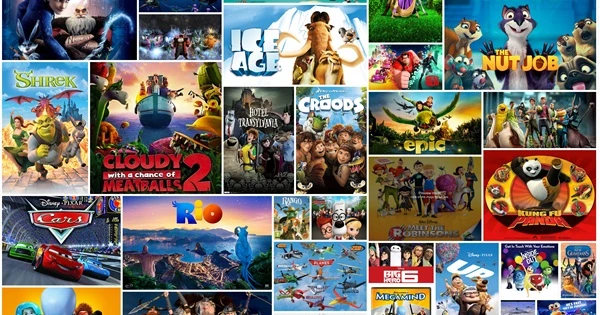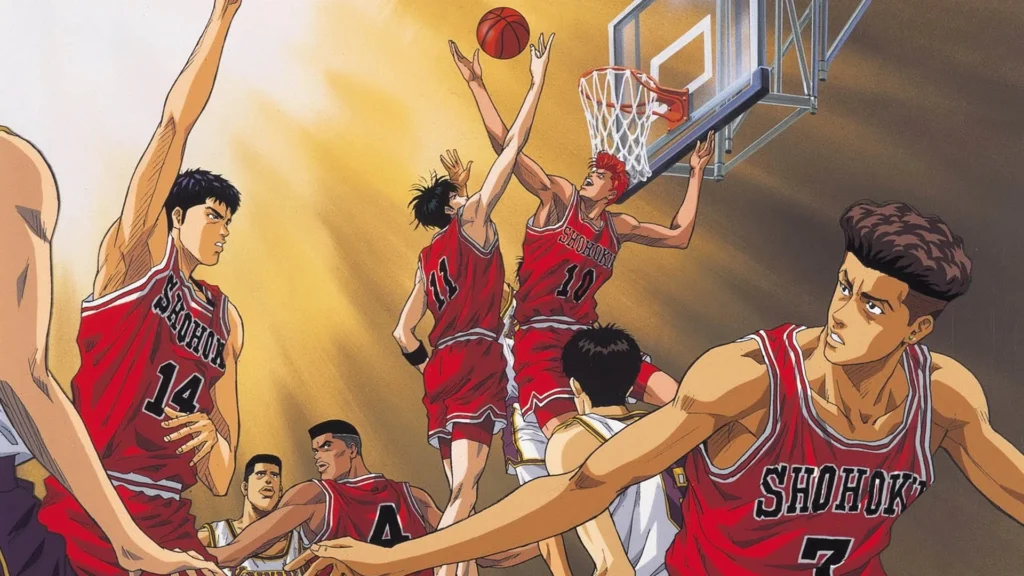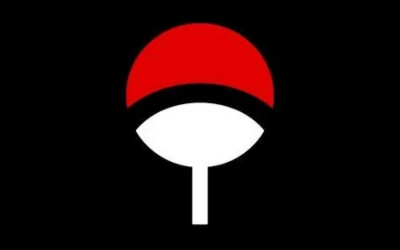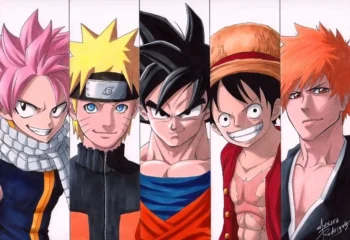As a committed anime fan with years of intense exploration, I’ve gone on a quest that goes beyond the animated worlds. As a result, I make a fascinating query based on deep study and trustworthy sources: “What if anime never existed?” It’s clear that anime’s absence would create a hole in joy, support, and shared experiences, fundamentally altering worldwide perceptions of Japan and redefining industries and personal connections. Therefore, let’s embark on an exploration of this hypothetical scenario, delving into the significant cultural, economic, and personal consequences of such a void. Out of all, I feel the very first thing that is going to be affected is Culture.
Cultural Impact
In this context, “Cultural Impact” refers to anime’s enormous influence on shaping and enriching cultural components both within Japan and abroad. It involves how anime affects and contributes to numerous parts of culture, such as storytelling mediums, entertainment sectors, and global impressions of Japan.
1. Manga and Light Novels: Anime offers as an exciting entry point into the world of manga and light novels. Anime fascinates audiences all across the world with its bright images, fascinating tales, and character exploration, boosting interest in original written works. The absence of anime may limit the global recognition and success of manga and light novels to a smaller audience.

2. Live-Action Adaptations: Anime has had a significant impact on live-action adaptations. Anime frequently introduces unique visual styles, storytelling strategies, and customs that influence live-action works. Without this influence, live-action adaptations may lack the unique features that attract spectators, resulting in a different creative landscape in the film industry.
3. Global Perceptions: Anime serves as a cultural bridge, introducing overseas audiences to Japanese traditions, design, and societal standards. The absence of anime may result in the continuation of assumptions and misunderstandings about Japanese culture, influencing how Japan is regarded abroad. The importance of anime in establishing Japan’s image as a creative and technologically competent nation becomes increasingly important in terms of its cultural impact.
Entertainment Industry
The “Entertainment Industry” refers to anime’s broader influence on many forms of media and creative expressions, both within and outside of Japan. It investigates how anime inspires films, cartoon shows, and even music videos, all of which contribute to the global entertainment landscape.
1. Effect on Films: The effect of anime on renowned films such as Kill Bill, Pacific Rim, and Inception demonstrates its significance in shaping storylines, visual styles, and even entire genres. The absence of anime could change the course of these influential films, affecting not just their creative path but also their cultural relevance.
2. Influence on Animated Shows: Anime has influenced Western animated shows such as Avatar: The Last Airbender and Kim Possible. Without the influence of Japanese storytelling and animation skills, the absence of anime could result in a new environment in Western animation, with these shows potentially taking on alternative creative routes.

Global Fan Communities
“Global Fan Communities” refers to the vast networks and communities that have emerged around anime fans all over the world. These groups bring fans together by encouraging debates, activities, and sharing of experiences relating to anime and its numerous genres.
1. Influence on Conventions and Events: Because anime has a vast global fandom, it has an impact on regulations, events, and gatherings. The lack of anime could redefine these meetings, potentially resulting in a different landscape for fan conventions and events, affecting the worldwide anime community’s sense of togetherness and shared experiences.

2. Fan Art and Fan Fiction: Anime has inspired fans to express their creativity and reimagine characters and tales through fan art and fan fiction. Consequently, in the absence of anime, the focus and themes of fan productions may shift, leading to a distinct artistic and literary landscape within fan communities. This highlights the transformative influence of anime on fan expression and the potential evolution of creative output in the absence of this influential source of inspiration.
3. Online Platforms: The internet allows global fan communities to flourish by exchanging content, theories, and discussions. Without anime, these online venues may focus on other cultural phenomena, altering the dynamics of how fans connect and engage with one another on digital platforms.
The Anime Expo or Comic-Con, which are significantly impacted by anime, demonstrate how these events function as epicenters for global fan communities, generating a sense of solidarity among fans.
Economic Impact
The term “Economic Impact” refers to the significant contributions that anime contributes to the Japanese economy and the global entertainment market. Revenue from anime production, distribution, products, and overseas license is included.
1. Economic Contribution: Anime contributes significantly to Japan’s economic environment. The absence of anime may result in a revenue void, harming industries associated to animation production, goods sales, and Japan’s overall economic impact from the anime sector.
2. Merchandising: The popularity of anime extends beyond the screen to items such as toys, clothing, and collectibles. Without anime, the marketing environment would be devoid of the wide and expansive range of products that contribute to the global consumer market.

3. International Licensing: The international appeal of anime leads to licensing partnerships that bring Japanese content to viewers all over the world. Consequently, the dynamics of international licensing and cross-cultural collaborations in the entertainment sector may be drastically altered if anime is not present. This underlines the pivotal role of anime in shaping global entertainment dynamics and fostering cross-cultural exchange in the industry.
Anime’s significant economic contributions to Japan, such as employment creation, retail sales, and worldwide licensing deals, demonstrate its status as a major economic force.
Technological Advancements
In the context of anime, “Technological Advancements” relate to its role in encouraging innovation in animation and filmmaking technology. Anime has frequently been at the forefront of adopting, and in some cases pioneering, new techniques that have an impact on the larger technological scene.
1. Animation Technologies: The requirement for sophisticated animation in anime has fueled developments in animation technology. The lack of anime may hinder the development and adoption of particular animation methods, hurting not only the anime business but also the larger animation and filmmaking sectors.
2. Filmmaking Innovation: The distinct visual styles and storytelling techniques of anime have had a profound impact on filmmaking approaches worldwide. It’s worth noting that certain visual storytelling advances found in anime-influenced films may not have developed without anime as a source of inspiration. Consequently, this influence has the potential to lead to a different trajectory for the filmmaking industry, accentuating the significant role of anime in shaping global cinematic innovation and creativity.

3. Cross-Industry effect: The effect of anime often extends beyond its own industry. Technological advancements in anime have the potential to significantly impact allied disciplines such as virtual reality, gaming, and digital entertainment. Consequently, the absence of anime could potentially influence the speed and direction of technical advancements in these interconnected industries. This highlights the far-reaching influence of anime on technological innovation and creative development in related fields.
The employment of hand-drawn animation techniques in anime films by Studio Ghibli has inspired animation studios around the world, demonstrating how anime contributes to the growth of animation technologies.
Sports and Influences
“Sports and Influences” investigates how anime influences sports culture, notably in Japan, as well as how it shapes individuals’ interests and aspirations, even in professional sports.
1. Football/Soccer Influence: Anime, such as Captain Tsubasa, has played an important part in creating interest in football (soccer) in Japan. The absence of anime may result in a distinct sports landscape, perhaps hurting football popularity and youth participation.
2. Basketball Influence: Anime such as Slam Dunk affected the perception and appeal of basketball in Japan. Without anime, basketball culture and its representation in Japanese media could go a different path.

3. Athlete Influence: Anime has influenced athletes all across the world, with football stars like Lionel Messi and Andres Iniesta proclaiming their love for series like Captain Tsubasa. The absence of anime may affect the factors that shape young athletes’ objectives and interests.
The fact that football stars such as Lionel Messi are fans of Captain Tsubasa demonstrates how anime can affect even professional athletes.
Joy and Support
“Joy and Support” refers to anime’s emotional impact on individuals, creating joy, unity, and offering a support system for fans, particularly during difficult times.
1. Emotional Connection: Indeed, anime frequently evokes powerful emotional responses, establishing a strong bond between the audience and the material. As a result, the absence of anime may lead to a void in the emotional ties that people form with imaginary worlds and characters. Consequently, the impact of anime on individuals’ emotional connection with fictional narratives and characters cannot be overlooked.
2. Friendship and Community: Anime serves as a common interest that pulls people together. The absence of anime may have an impact on the establishment of groups and friendships based on a shared love of the medium.

3. Escapism and Mental Health: Anime is a sort of escapism, providing solace and support during trying times. The absence of anime could rob people of an important coping technique, potentially hurting their mental health and well-being.
Countless unique stories speak to how anime has brought comfort and support during difficult times, fostering a sense of community and understanding among fans.
Real-Life Example
“Real-Life Example” addresses the potential influence on persons, friendships, and experiences in the absence of anime through a concrete, relatable scenario.
1. Impact on Personal bonds: Examine how anime has influenced the formation of friendships and bonds between individuals. The lack of anime may change the dynamics of these personal connections and shared experiences, which frequently define relationships within the anime community.
2. Personal Growth Influence: Consider the impact of anime on personal growth, such as the development of interests, viewpoints, and even professional pathways. The absence of anime may result in other sources of inspiration and influences, molding people in different ways.

3. Navigating Life Challenges: Examine how anime has provided comfort and motivation to people going through difficult times in their lives. The absence of anime may have an impact on the coping methods and cultural touchpoints that people utilize to overcome adversity.
Conclusion: What If Anime Never Existed?
Finally, the speculative possibility of anime never existing reveals a complex web of cultural, economic, and personal impacts. The real-life examples demonstrate anime’s enormous impact on individuals and communities, emphasizing its significance as a cultural force that goes far beyond the sphere of entertainment. In this other reality, the globe would be characterized by a substantial lack of common cultural touchpoints and the flourishing communities that grow around them.








